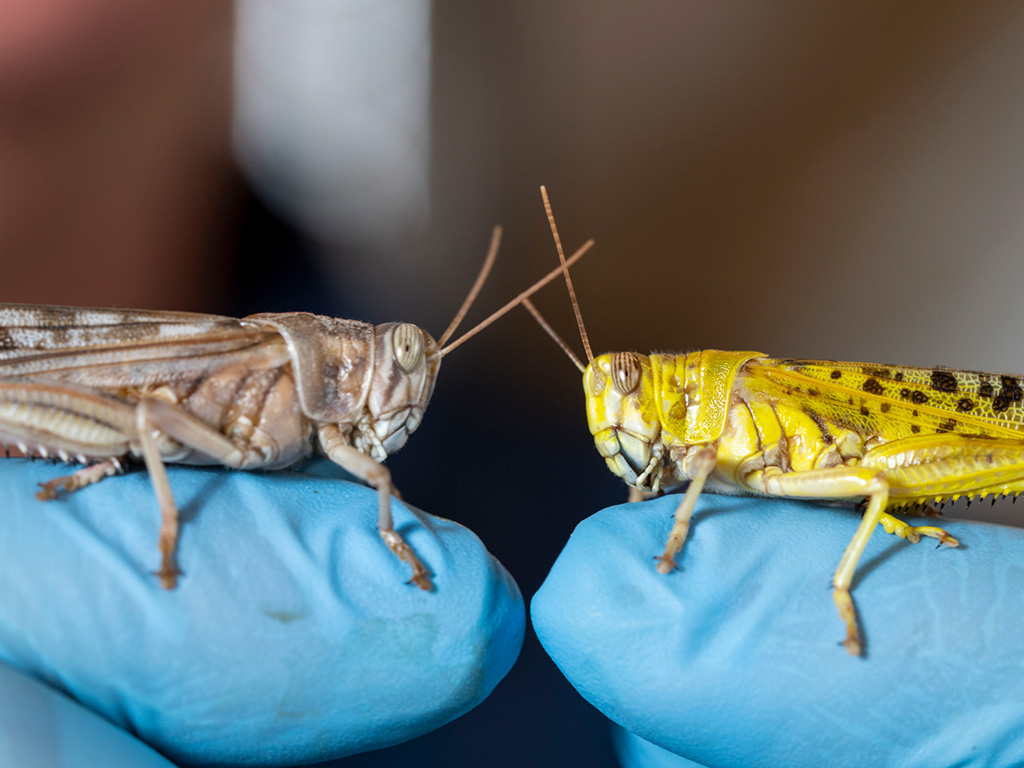What causes locusts to destroy crops? USDA-approved facility studies the insects’ Jekyll-to-Hyde transformation

Texas A&M AgriLife photo by Sam Craft
The Behavioral Plasticity Research Institute at Texas A&M University is researching an insect that has plagued humans for thousands of years – locusts.
For the first time researchers across Texas A&M AgriLife can now import and study many major global pests by utilizing the U.S. Department of Agriculture-approved insect quarantine facility maintained by the Department of Entomology at Texas A&M College of Agriculture and Life Sciences.
Dr. Hojun Song, professor in the Department of Entomology and one of the lead researchers at the institute, said locust outbreaks impact the livelihoods of one in 10 people on the planet.
The most recent locust outbreak occurred from 2019-2022 and caused more than $1.3 billion in crop damage in 23 countries across eastern Africa, the Middle East and Asia, from Ethiopia to Nepal.
All locusts are grasshoppers, but not all grasshoppers are locusts. There are about 20 known locust species among the 7,000 species of grasshoppers. They are characterized by the ability to transform through a phenomenon called locust phase polyphenism, which changes their biology, morphology, color and behavior.
This transformation is triggered by population density. At low density, they are shy and avoid each other, but at high density, locusts become gregarious and form large collective swarms that migrate.
Song and other researchers at the institute hope to learn more about locust phase polyphenism and what stimulates locusts to change, so that technology might one day mitigate their impact on humans.
The Texas A&M facility is part of a five-year, $12.5 million multi-institution research institute established through the National Science Foundation. It includes researchers from Texas A&M AgriLife Research, Baylor College of Medicine, Arizona State University, Washington University in St. Louis, Southern Illinois University Edwardsville and USDA-Agricultural Research Services. The locust rearing facility at Texas A&M is one of two facilities that study locusts in the United States.
The collaborative institute integrates a range of biological disciplines, including evolutionary and molecular sciences, to understand the larger phenomenon, Song said. The research is in its third year.

